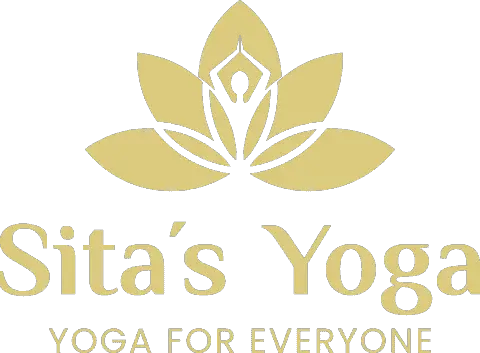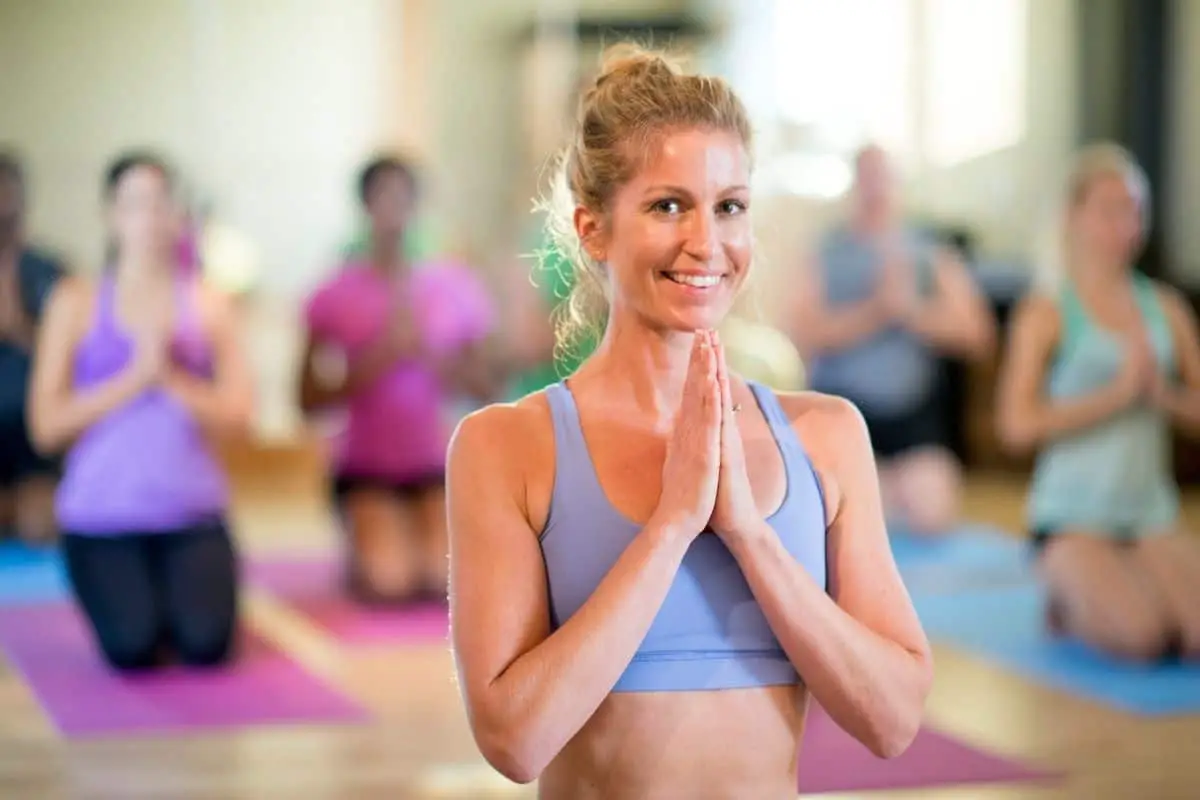Exercise and yoga are two excellent ways to get your body active, and right now most of us have more time than ever to do so. While yoga can offer increased flexibility and tone, both excellent benefits to go alongside exercising, doing exercise and yoga together must be done the right way to ensure you do not injure yourself.
Yoga and exercise do go together! Although, yoga is typically best to do after you exercise. The ability of your muscles to contract is what gives them their strength, and yoga can serve as an excellent way to stretch those contracted muscles back out. Additionally, yoga can help your body return to a state of rest.
At this point you are probably wondering what those exceptions are. And, just how do yoga and exercise go together? If either of those questions is on your mind, or you’re curious about anything else related to yoga and exercise as a pair, then keep reading.
Do Yoga and Exercise go Together
The idea of practicing yoga and exercising seem like they’re on opposite ends of the fitness spectrum. Yoga is typically a means of strengthen muscles through balances. Yoga is peaceful, and very personal. Other forms of exercise focus on increasing the heart rate, pushing your limits, and sometimes some loud hype music.
But, that doesn’t mean that you can’t do both. In fact, there are some really great benefits of practicing yoga along with other forms of exercise. Here are just a few benefits of yoga and exercise together:
- Return the heart rate to normal
- Great for stretching muscles to prevent tearing or damage
- Increase regular blood flow
What Exercises can you Pair with Yoga?
As stated before, this will primarily have to do with the type of exercise you are going to be doing, and in what order. For pre-exercise yoga sessions, try to stick to exercises that require increased flexibility or range of movement.
This is because yoga will help stretch out your muscles, which is great for flexibility, but not so great for exercises that are more strength focused.
Ballet
Ballet is a strenuous form of exercise, but also requires a lot of flexibility. Several sources mention yoga as a great pairing for ballet. Not only does it assist in strengthening your body and flexibility, but it can also help you relax from the pressures of being in a ballet.
Additionally, if you are not actively participating in a performance, yoga can be an excellent way to keep your body flexible and your muscles active.
Gymnastics
Gymnastics is another intensive form of exercise that requires both strength and flexibility, both of which we know can be aided through yoga. However, besides these benefits, yoga can serve as a great more relaxing form of exercise to balance out the more intense workout routine of gymnastics.
But, if you are practicing your yoga after an exercise, you don’t have to stick to just one of these. It can serve as a great way to stretch your muscles back out, get your body back to a resting state, and get you ready to continue your day.
Can Yogis go to the Gym?
Absolutely, and in fact doing yoga in accompaniment with exercising could be very beneficial if done properly. Yoga is a great way to stretch your muscles, but this is not necessarily what your body needs before exercising.
If you are a ballerina or a gymnast, then your performance may benefit from the added flexibility you attain from yoga. However, if you are a runner or lifting weights, then that added stretch before your workout could actual be harmful.
As I stated above, the ability of your muscles to contract is what gives them their strength. Imagine your muscles are like a spring, and then imagine pulling that spring out.
If you have ever done this before you know that the spring does not contract the same or with as much force after being stretched out. This is the same with your muscles, and according to this article by the National Health Service in the UK
“… injury occurs not because the muscle isn’t flexible enough, but because the muscle isn’t producing enough force to support itself. A muscle might not produce enough force, either because it is not strong enough, or it didn’t contract at the right time… “
In other words, this stretching of your muscles before exercising is preventing your muscles from contracting properly, which is not allowing your muscles to use the full force they have and could cause injury.
So, if you are doing a more intensive exercise, dynamic stretches that increase your range of movement would be better than static stretching like yoga, but if you are doing a less intensive form of exercise that requires more flexibility, a pre-activity yoga session should be okay.
What About Yoga After Exercise?
After exercising is the ideal time to do yoga. According to that same National Health Service article, stretching is best done when your muscles are warm and pliable, like after exercising.
Using yoga to stretch after exercising could help blood flow back into your muscles as well as helping those contracted muscles stretch back out, which could help with stiffness. Additionally, yoga can help lower your heart rate and get your body back to a state of rest after exercising.
Can You do Yoga on Rest Days?
This will depend on the type of yoga you are doing. When you exercise your muscles are torn and damaged, and then with rest will grow back and heal. Doing more intensive versions of yoga could prevent your muscles from getting the necessary rest they need to heal.
However, this could be avoided if the muscle groups you exercised were not the same muscle groups that were being used during your more intensive yoga.
That being said, if you are participating in a more strenuous version of yoga on your “rest day” it might not really be considered a rest day anymore.
How could yoga be helpful on rest days?
While more strenuous versions of yoga are not helpful and in fact potentially damaging to do on off days, there are versions of yoga that could be beneficial.
These less intensive versions of yoga could serve as a way to stretch your muscles and promote flexibility in the long run. This long-term flexibility could aid in prevention of additional strain on your joints when exercising in the future.
Less Strenuous Types of Yoga
The world of yoga is vast, and if it is something you find yourself genuinely interested in, I would highly recommend doing some research about the different types of yoga there are, and maybe see which ones are offered in your area.
There is a type for everyone from more strenuous workouts to highly spiritual ones to ones that might put you to sleep. This is by no means an exhaustive list, but here are a few types of yoga that are less strenuous.
- Yin yoga: a slower type of yoga with poses that are held for a long time. Designed to help with flexibility and circulation.
- Iyengar yoga: A less intense type of yoga suited for all ages. Typically uses props while in the held poses.
- Hatha: A type of yoga that has several other types within. Typically, a less intense style of yoga that combines breathing exercises and long held poses.
- Sivananda: A type of Hatha Yoga that is practiced at the end of many other types of yoga. Typically, more spiritually focused.
Can you do Yoga at Home?
If you are planning on adding yoga on your rest days, some of you might be wondering if you can practice yoga at home. I understand, a gym membership added on top of yoga classes could be expensive.
So, you will be happy to know that you can do yoga at home, and many people do. However, many yoga instructors suggest that you learn the basics of poses and breathing exercises before buying a mat to use at home.
That being said, there are virtual classes and plenty of videos online that could help you get those basics down as well. Make sure to have a place in your home where you can focus and move around comfortably.
Final Thoughts
Yoga and exercise aren’t a likely pair, but they are a good pair! Together, if done right, yoga and exercise can enhance your overall fitness, while taking extra care of your body. There’s no reason to avoid mixing yoga and exercise.
Sources
- https://www.researchgate.net/publication/8153712_The_Effects_of_Yoga_Training_and_a_Single_Bout_of_Yoga_on_Delayed_Onset_Muscle_Soreness_in_the_Lower_Extremity
- https://www.businessinsider.com/what-over-exercise-does-body-brain-health-2018-4#:~:text=Exercise%20is%20supposed%20to%20be,injuries%2C%20and%20make%20you%20addicted.
- https://www.nhs.uk/live-well/exercise/stretch-before-exercising/
- Yoga Before or After Workout: When is Zenning Out More Beneficial?
- https://jamanetwork.com/journals/jamainternalmedicine/article-abstract/550848
- https://yogamedicine.com/guide-types-yoga-styles/
- https://www.yogajournal.com/lifestyle/ask-expert-muscle-shaking-good
- https://ballethub.com/barre-down-dog-how-does-yoga-benefit-ballet-dancers/#:~:text=Ballet%20is%20demanding%20both%20mentally,yoga%20can%20help%20with%20both!&text=Especially%20if%20you’re%20on,body%20open%20and%20muscles%20engaged.
Sitasyoga.com is a participant in the Amazon Services LLC Associates Program, an affiliate advertising program designed to provide a means for sites to earn advertising fees by advertising and linking to Amazon.com. We also participate in other affiliate programs which compensate us for referring traffic.




